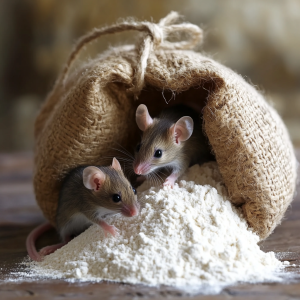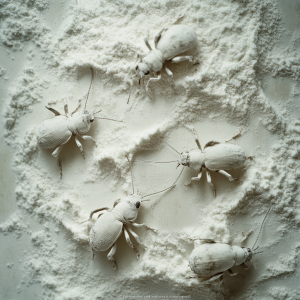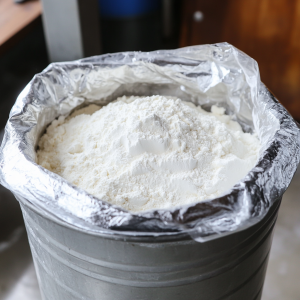
Keep flour from all pests
Flour is a pantry staple, but storing it long-term can be tricky. With the right methods, you can keep your flour fresh and usable for years. The key to successful long-term storage lies in creating an airtight, dry environment that protects against pests and preserves the flour’s quality.
The most effective method for storing flour and other similar staples long term is using food-grade Mylar bags placed inside sturdy, airtight buckets with oxygen absorbers. This combination helps protect against moisture, insects, and oxidation, preserving the quality of the food for an extended period. The Mylar bags provide an excellent barrier against light and moisture, while the bucket adds an extra layer of protection and makes storage and handling easier. Oxygen absorbers help prevent oxidation and inhibit the growth of aerobic pathogens and pests.
For shorter-term storage or smaller quantities, consider using a FoodSaver or similar vacuum sealer to remove air and create an airtight environment. This method significantly extends shelf life by preventing exposure to moisture and oxygen. Another effective option is storing flour in Mason jars using a Mason jar oxygen extractor, which helps prevent oxidation and extends shelf life.

Weevils are inherent in whole grains
It’s important to note that some popular storage methods can actually be detrimental to your flour’s longevity. Contrary to popular belief, freezing flour before storage isn’t recommended. This method can introduce unwanted moisture, potentially leading to mold or spoilage. This is particularly problematic for self-rising flour, which can lose some of its effectiveness if frozen, thawed, and refrozen due to moisture changes. Additionally, when you remove cold flour from the freezer and let it sit at room temperature, it will gather moisture from the air due to condensation, similar to a cold glass of water. This added moisture can negatively affect your baked goods. At the very least, be sure to let the flour completely come to room temperature.
Similarly, oven canning flour is not advisable. The heat from this process can accelerate the breakdown of nutrients in the flour, significantly reducing its
shelf life. Instead, focus on keeping your flour dry from the start and storing it at a stable, room temperature. It’s worth noting that using flour at anything other than room temperature could potentially ruin your baked goods, affecting texture and rise.
Pantry moths and weevils are the primary threat to stored flour. The pantry moths often hitch a ride home with you from the store. The weevils are inherent in whole grains. To protect your flour, always inspect packaging for any signs of infestation before purchasing. For extra protection, consider adding a small amount of food-grade diatomaceous earth to your flour before sealing. This natural substance is safe for consumption and effectively deters weevils and pantry moths.

Store flour in a mylar bag in a sealed bucket.
When it comes to storage location, keep your sealed flour in a cool, dry place away from direct sunlight. A stable environment helps maintain quality over time. Even with proper storage, it’s wise to periodically check your flour for any signs of infestation or spoilage.
By following these methods, particularly the Mylar bag and bucket system for long-term storage, you can ensure your flour remains fresh and ready for use, whether you’re baking next week or preparing for long-term food security. Remember, proper storage is key to maintaining your flour’s quality and protecting it from unwanted pests. With the right approach, you can keep your pantry stocked with fresh flour for years to come, ready for whatever culinary adventures await.


